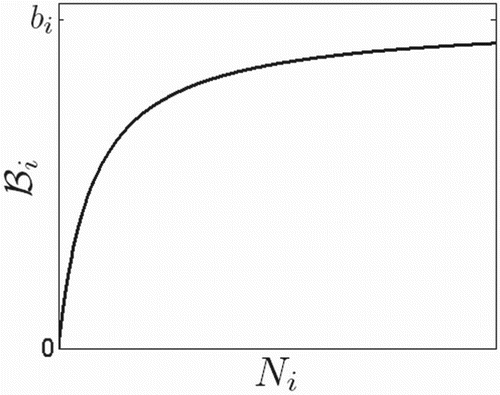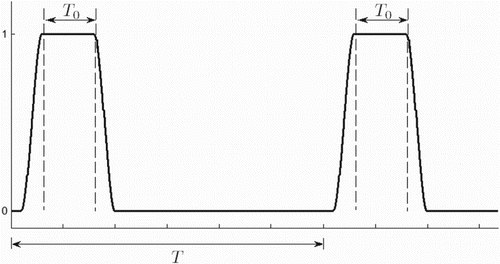Figures & data
Table 1. Transitions 
 , and the respective values
, and the respective values 
 , where vector
, where vector 
 has unity in the position corresponding to a variable
has unity in the position corresponding to a variable 
 and zeros elsewhere.
and zeros elsewhere.
Table 2. List of variables within patch i, 
 .
.
Figure 3. Flea parameters ,
, and
were obtained by fitting Equations (Equation10
) and (Equation11
), in the absence of infection and migration, to monthly flea load data (marked by +), given in [Citation78].
![Figure 3. Flea parameters bh, bt, and dt were obtained by fitting Equations (Equation10dZihdt=φU3h(t)bhNi1+Ni+NihNih−dih+λhIiNi+1Zih+γhSi+RiNi+1Yih+∑j=1pmxijSj+RjNj+1ZjhAj−Si+RiNi+1ZihAi,dYihdt=α2λhIiNi+1Zih−dihU+γhSi+RiNi+1Yih+∑j=1pmIxijIjNj+1YjhAj−IiNi+1YihAi,dYitBdt=(1−α2)λhIiNi+1Zih−dihBYihB,) and (Equation11dZitdt=φU3t(t)btNi1+Ni+NitNit−dit+λtIiNi+1Zit+γtSi+RiNi+1Yit+∑j=1pmxijSj+RjNj+1ZjtAj−Si+RiNi+1ZitAi,dYitdt=λtIiNi+1Zit−ditU+γtSi+RiNi+1Yit+∑j=1pmIxijIjNj+1YjtAj−IiNi+1YitAi,), in the absence of infection and migration, to monthly flea load data (marked by +), given in [Citation78].](/cms/asset/901c4193-7f41-4b00-8f49-48d7d6bc24dd/tjbd_a_978400_f0003_c.jpg)
Table 3. Rate values for calculating 
 and
and 
 .
.
Table 4. Prairie dog parameter values (per year, except for 
 , which is given per day*).
, which is given per day*).
Table 5. Flea parameter values (per day).
Figure 4. Function for various values of k, where
denotes the largest eigenvalue of a symmetric matrix
and k is the parameter in the birth rate
which controls the level of the Allee effect. A strong Allee effect exists when
.
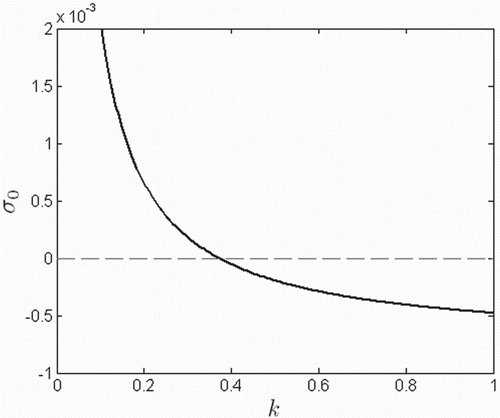
Figure 5. Population size over five years in the absence of disease for the smallest patch (, left) and the largest patch (
, right), for
and 0.7, according to the ODE model. Time t is given in days. A strong Allee effect is evident for values of k such that
.
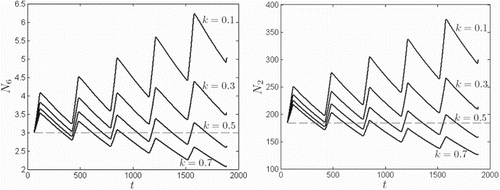
Figure 6. Seventy-year ODE solution curves for Rankin Ridge, , in the absence of infection, with the initial conditions
and
for all i, where
is the area of patch i. Time t is given in days and
is the beginning of the prairie dog birth season. Solutions approach a positive periodic solution for initial conditions exceeding periodic threshold
for all i.
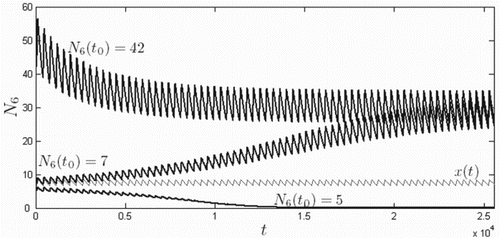
Figure 7. Five-year solution curves for prairie dog classes and
for three patches (
7, and 2, north to south from left to right) and for unblocked flea proportions
(top row), 0.5 (second row), and 1 (third row), based on the ODE model (dark) and one sample path of the SDE model (light) for the initial conditions given in Equation (Equation12
), and introducing two infected prairie dogs in North Boundary on day 120:
. For this example, only O. hirsuta is modelled, without O. t. cynomuris. Blocked individuals are not as effective at transmitting plague as unblocked.
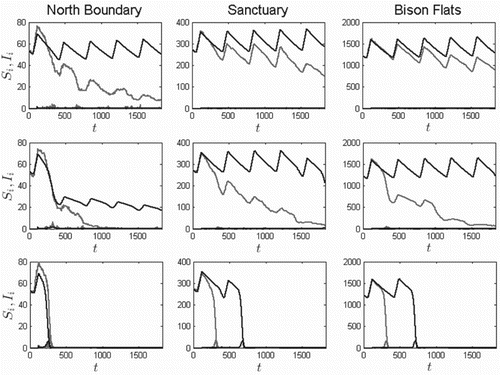
Figure 8. Two-year solution curves for three patches (north to south from left to right, 7, and 2, respectively) for the two-flea species model and
(no blocked O. hirsuta), based on the ODE model (dark) and one sample path of the SDE model (light) for the initial conditions given in Equation (Equation13
). As in Figure , two infectious prairie dogs are introduced into North Boundary at time 120 days:
. The models predict a much faster spread of plague with both species included.
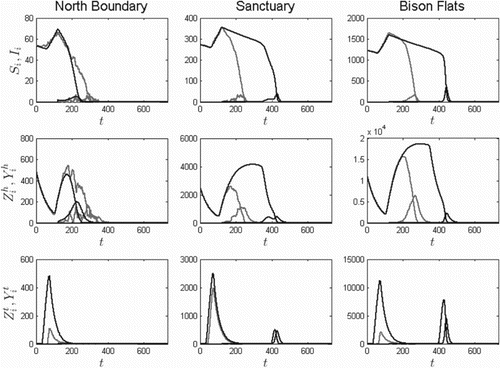
Figure 9. Time (in days) to extinction of each patch for the ODE model (connected circles) and 1000 sample paths of the SDE model (box plots), using initial conditions given by Equation (Equation13) and introducing
. Patches are ordered by distance from North Boundary, from closest (left, North Boundary itself) to furthest (right). See Figure and Table for the spatial arrangement. The ODE model predicts much longer times to extinction for every patch except North Boundary.
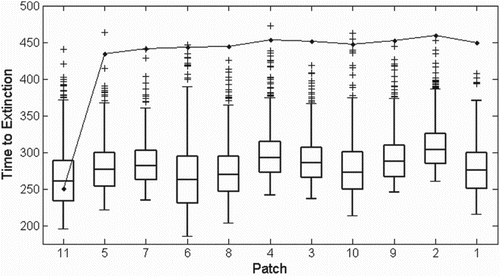
Figure 10. Five-year numerical solutions for prairie dog and flea populations in North Boundary () for control (insecticide) -induced death rates resulting in 75%, 85%, and 95% death at the end of the application compared to levels immediately prior to application, based on the ODE model (dark) and one realization of the SDE model (light). Time t is in days, initial conditions are given by Equation (Equation13
), and
. Insecticide is ineffective at 75%, controls the population at 85%, and prevents plague-driven decline in the prairie dog population at 95%.
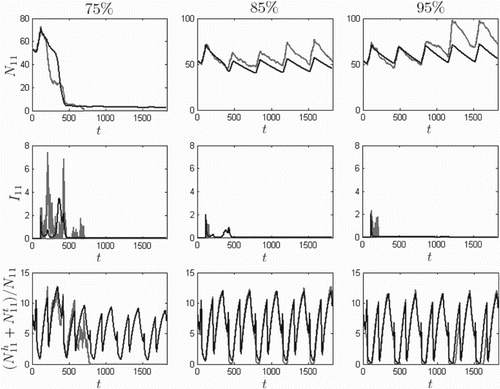
Figure 11. Twenty-year solutions with (bottom) and without (top) the Allee effect, for vector control using death rates resulting in 75% death at the end of the application compared to levels immediately prior to application, based on the ODE model (dark) and one realization of the SDE model (light). Time t is in days, initial conditions are given by Equation (Equation13
), and
. In the absence of the Allee effect, the model predicts eventual recovery of the prairie dog population under this level of vector control, whereas with the Allee effect, the population faces extinction.
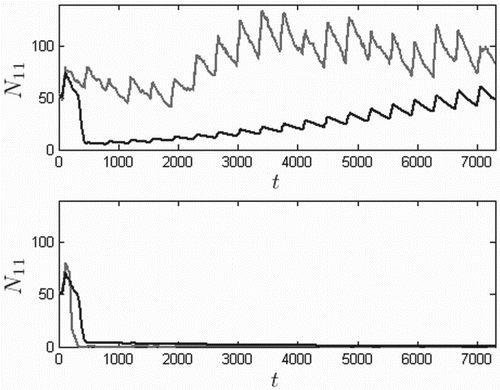
Figure 12. Ten-year North Boundary () solution curves
,
, and
for annual vaccination from May through July, at rates that result in 10% (left), 20% (middle), and 30% (right) vaccinated by the end vaccination period, for the ODE model (dark) and one sample path of the SDE model (light). Time t is in days, initial conditions are given by Equation (Equation13
), and
. Although the plague suppresses the population, the patch avoids extinction when vaccination rates are sufficiently high.
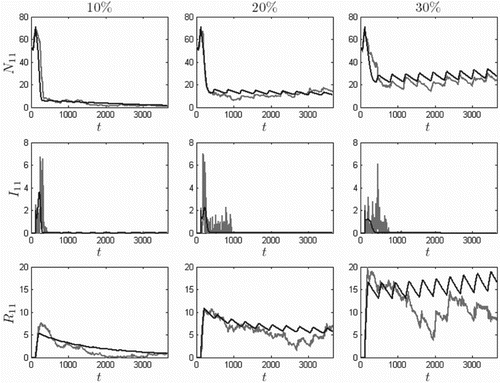
Figure A1. Prairie dog town locations with respect to one another. Related references: [Citation19, Citation65].
![Figure A1. Prairie dog town locations with respect to one another. Related references: [Citation19, Citation65].](/cms/asset/e14ae63f-2fbe-4213-8a19-30c7ff0b7691/tjbd_a_978400_f0013_b.gif)

